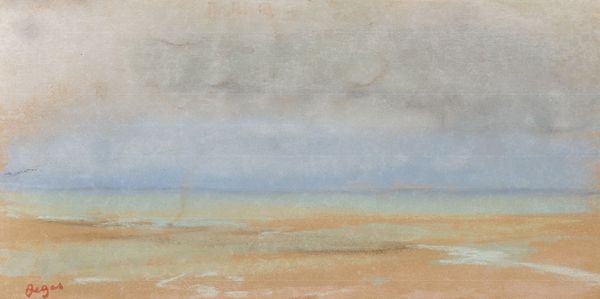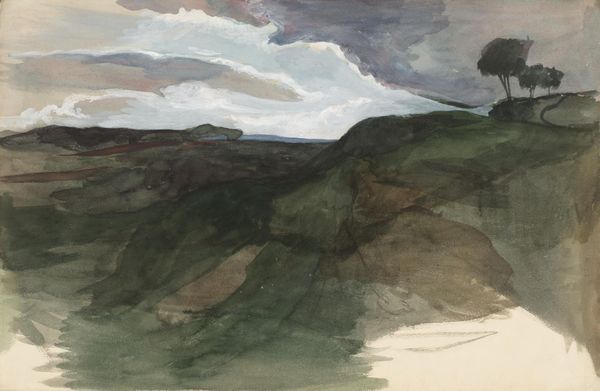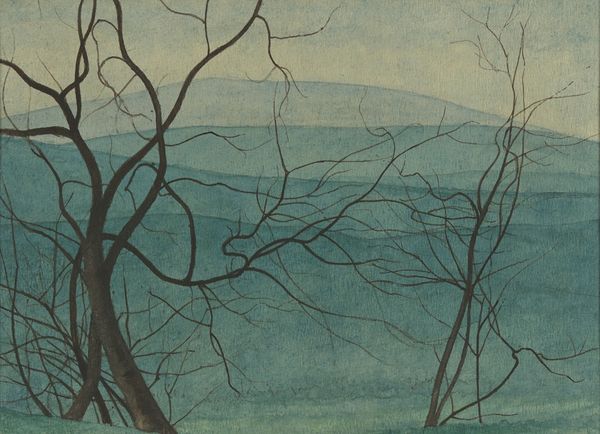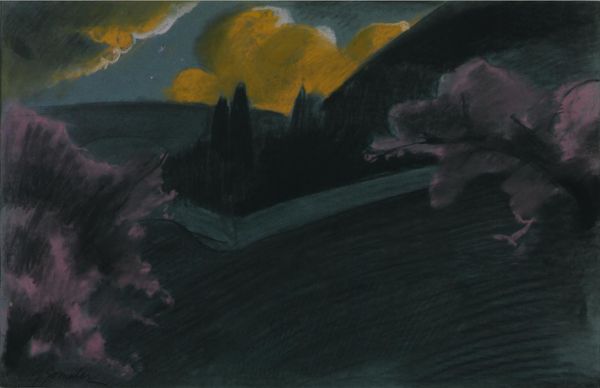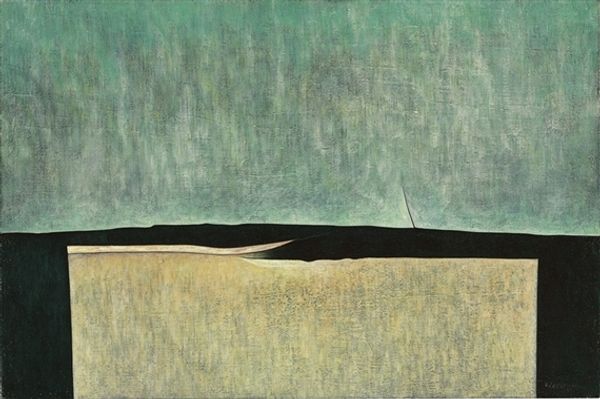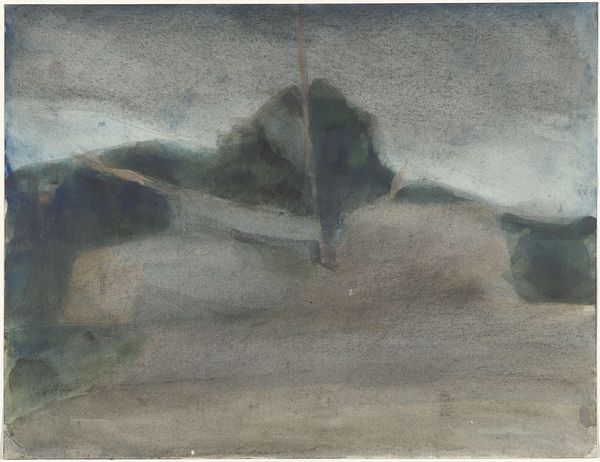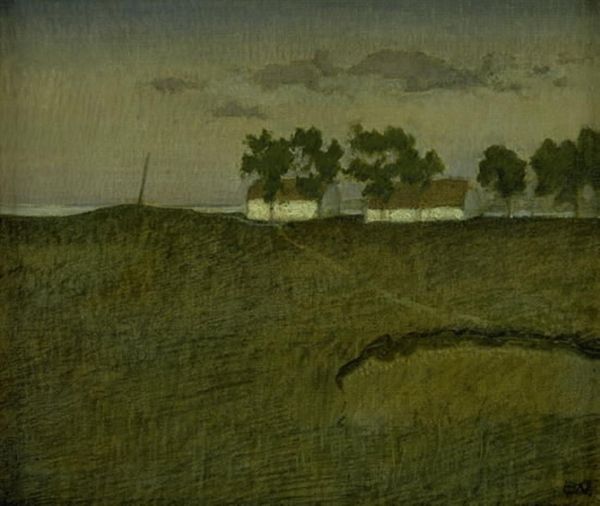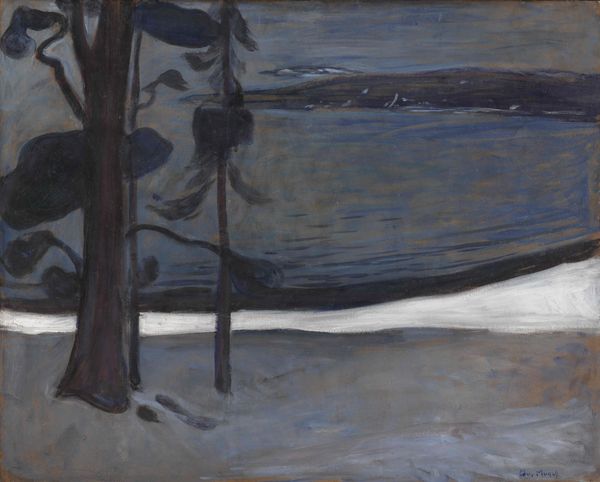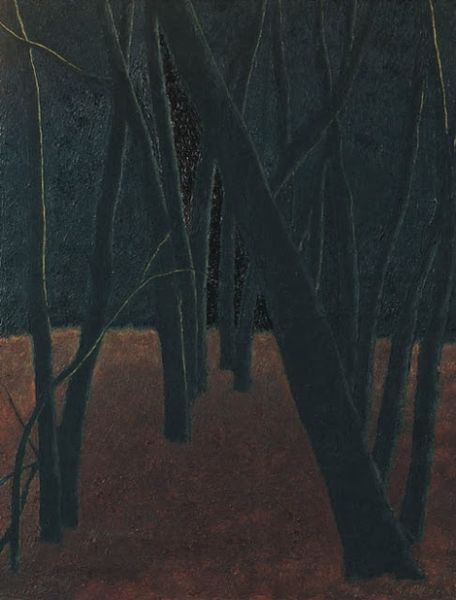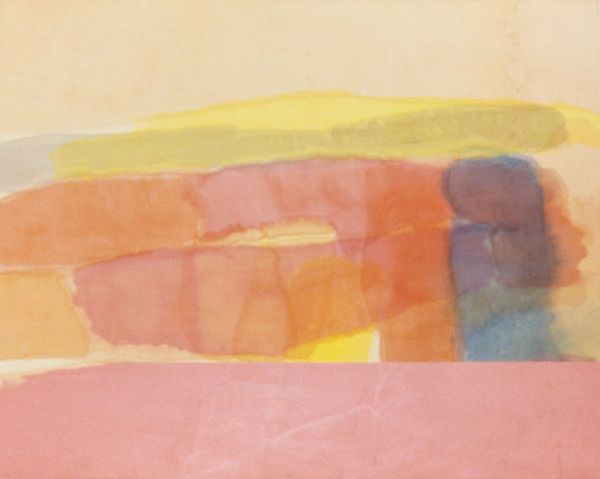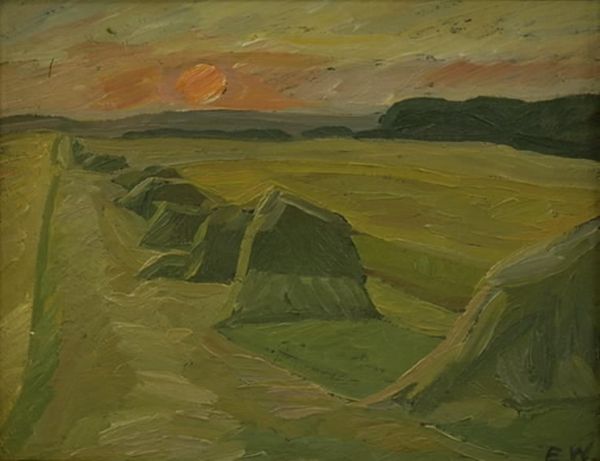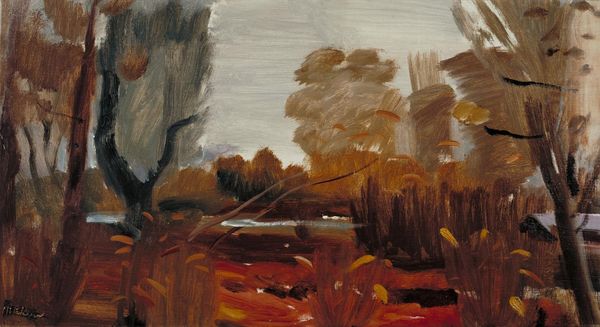
Copyright: Public Domain: Artvee
Curator: The artwork before us, created by Léon Spilliaert in 1919, is entitled "Landscape under a Red Evening Glow with Migratory Birds," rendered in watercolor and drawing. Editor: It's strangely unsettling, isn't it? That intense red sky looming over this dark, almost barren landscape... I feel a distinct sense of foreboding. Curator: It's fascinating how Spilliaert captures this tension. Given the socio-political context of 1919, just after the First World War, this landscape can be interpreted as a reflection of the collective trauma and uncertainty permeating European society at the time. The redness suggests not just sunset, but perhaps something more ominous, like the afterglow of destruction. Editor: The stark, almost gothic silhouettes—that single bare tree, the vague form of a building in the distance—they become powerful symbols. A kind of silent witness against that vibrant, angry sky. What do you make of that mass of tiny marks clustered above the tree? The title refers to migratory birds? Curator: Precisely, the birds introduce an element of transition. Bird migrations often mark changes and adaptation in their ecosystems in ways that may be reflected to larger ecologies involving the people in their habitats. The drawing represents, or may signify collective identity. Spilliaert has arranged these points, to me, as something similar to that, the social organization and migrations of different peoples during and after the conflict. Editor: It is also tempting to consider that from an iconographic angle as death omens too. They also represent freedom and navigation, especially the type of bird that returns home by memory and using its perception of the earth's magnetic field. The birds and their arrangement create an arrow symbol which perhaps shows guidance, but possibly guidance through trauma. The layering in Spilliaert's application makes their forms loom threateningly. Curator: These birds might as well also symbolize the lost voices from this post war tragedy. Perhaps the arrangement is meant to point out something new the landscape offers from under its shadow? It is as though the birds are arranged to show something greater in life which seems out of frame or beyond what can be directly symbolized here. Editor: Ultimately, it’s a deeply atmospheric piece that evokes a complex range of emotions tied up within that era, between collective sorrow and faint symbols of guidance through such darkness. It’s an image that lingers long after you’ve moved on. Curator: Indeed. Spilliaert prompts us to contemplate the cyclical nature of loss and adaptation embedded in a singular cultural shift that affects all societies.
Comments
No comments
Be the first to comment and join the conversation on the ultimate creative platform.
